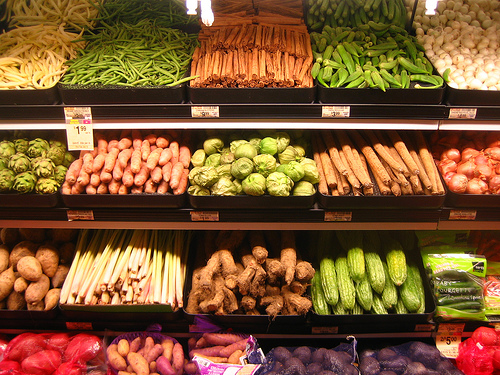Death to the supermarket
 Uniform, flawless produce requires a heartbreaking amount of food waste. (Photo by rick via Flickr)
Uniform, flawless produce requires a heartbreaking amount of food waste. (Photo by rick via Flickr)If we’re to feed the world delicious, nutritious food and halt climate change, we have to kill the supermarket.
There are many reasons why I suggest this enormous beast be culled. It thrives on the unsustainable industrial agriculture model of large-scale, monocrop food production, where food is not grown for taste or nutrition. It’s then shipped long distances, so you can eat lettuce in Vancouver in January. Even if garlic is grown in your region, you’re served up the garlic from China instead.
The produce section is a sterile place devoid of scent (the first sense to get us salivating), where the fruits and vegetables are uniform, barely ripe (if at all) and virtually flawless. It’s no wonder children don’t know their food grows in the ground or on a vine: the produce is so unnatural, it hardly seems a product of nature. Its sprawling, dizzying vastness is a maze that encourages overconsumption and takes up excess land to, among other things, allow for extra-wide shopping carts. It makes buying junk food more appealing than buying produce through a combination of store positioning, packaging and price, and this leads to disease.
I could go on; the reason I’m going to focus on here, however, is its massive — and one could suggest criminal — contribution to food waste.
